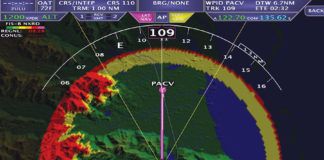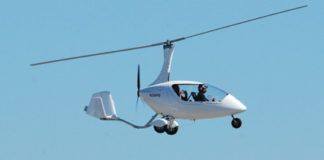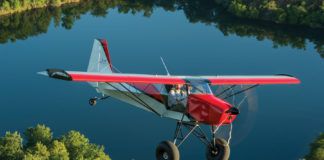No, Im not talking about hearing aids for Bambi. Im talking real, true aircraft headphones for a dollar. A Washington. An Anthony. A Sacagawea. One dollar hard, cold cash.
Every now and again serendipity strikes around this place. Thirty years or so ago I sort of fell into the copper tape, plastic plane antenna business when Burt Rutan muttered something about flat, lightweight internal antennas at one of his Oshkosh forums. Twenty years ago, it was an offhand comment at a party that I would probably do well in politics. Eleven years ago it was me and the love of my life being married by a retired United Airlines captain on the top of Pilot Hill in Oshkosh.
While this one doesn’t quite rank with those life-altering moments, it was sort of a lightning bolt that hit last week somewhere between Indianapolis and St. Louis at FL390 westbound from IAD to OAK. I was listening to JetBlues inflight entertainment system when it struck me that JetBlue was selling the head-phones I was wearing for a dollar. Nice headphones. Spring band, lightweight, either real leather or a good vinyl imitation on the earpieces, quality interconnect plug-a great little unit for a dollar. Buckets of them, available on the honor system: Throw a dollar bill into the can and take a headset. No limit. As many as you want at a buck apiece, and nobody was keeping score.
Off to the Shop
That prompted a little investigation when I got back to the Grass Valley Skunk Works. Turns out the headsets were nothing special. JetBlue designed its system to be compatible with the majority of the headphones in use with the iPods, wireless phones and all the rest of todays electronic entertainment menagerie. Thirty-two ohms a side, left and right channels separated onto a standard 3.5mm, three-section plug. A volt peak-to-peak drove the little rascals into saturation (and was painful to listen to, to boot).
The problem is that aircraft headphone circuits are designed to drive 600 ohm (old standard) or 150 ohm (new standard), and these headphones are 32 ohms. Put the earpieces in parallel to make a real aircraft headphone as opposed to a stereo headphone, and the impedance reduces to 16 ohms. While most of us design our headphone circuits to drive this low of an impedance, if you make a set for all the chairs in a four-seat airplane you are down to 4 ohms, and most of us do not figure on driving that low of a load on the headphone lead.
So my come-on of headphones for a buck was just a bald-faced lie? Sort of. For another buck and a half you could buy a transformer from Mouser to boop (thats a technical term, you’ll get used to it) the impedance up from 16 ohms (right and left channels in parallel) to somewhere on the order of 250 ohms, which places it right square in the middle between the old and the new standard (Mouser part number 42TL026, $1.73 in onesies and twosies).
Or, for those of you who just have to have stereo, you can use two of the transformers, one for each channel. See the schematic to find out how to interconnect the headphones with the transformers.
Piecework
How do you fit all of this stuff together? Hey, remember me? Im the electronics guy. I make all this stuff work at the electron level. You all are the master craftsfolks who build the thing. Me? I solder the headphones to the transformer, the matching phone plug to the other side of the transformer, test it all out, make sure it works, then liberally dose the transformer and connections with RTV (or even better, that expanding foam that they sell at the home store for sealing insulation), and shrink-sleeve the whole mess together. Remember, the transformers are a little smaller than sugar cubes, so a shrink-sleeve bulge isn’t going to be all that noticeable.
If you don’t get it potted quite right, and you pull a transformer lead out, what have you wasted? A couple of bucks and a few hours of work. Its not like you are performing major surgery on your $500 Dinky Cluck ANRs. You’re talking chicken feed to toss the broken thing out and try it again.
Hey, such a deal with your KITPLANES subscription. I have a few hundred of these transformers left over from a prior project that Im willing to give away to readers. Just send a self-addressed, stamped box that will hold two sugar cubes, and Ill send you two transformers back by return mail. Send to: RST Engineering-KP Transformers, 13993 Downwind Court, Grass Valley, CA 95945. Do not send money. I will not go to the post office and buy stamps for your box. A padded envelope may also work, but don’t blame me if the little things arrive smurshed. If you don’t send me the envelope by the end of November, you might email me to see if I have any left.
So where does all of this leave us? We could go in a dozen different directions. One of the directions might be to investigate the Bluetooth headpieces that have become popular for wireless phones. We might be able to cobble something together to use Bluetooth on our aircraft radios. Or we might want to think about how to make a two-bit amplifier to drive a low-impedance headset instead of using the transformer method. So many projects, so little time.













